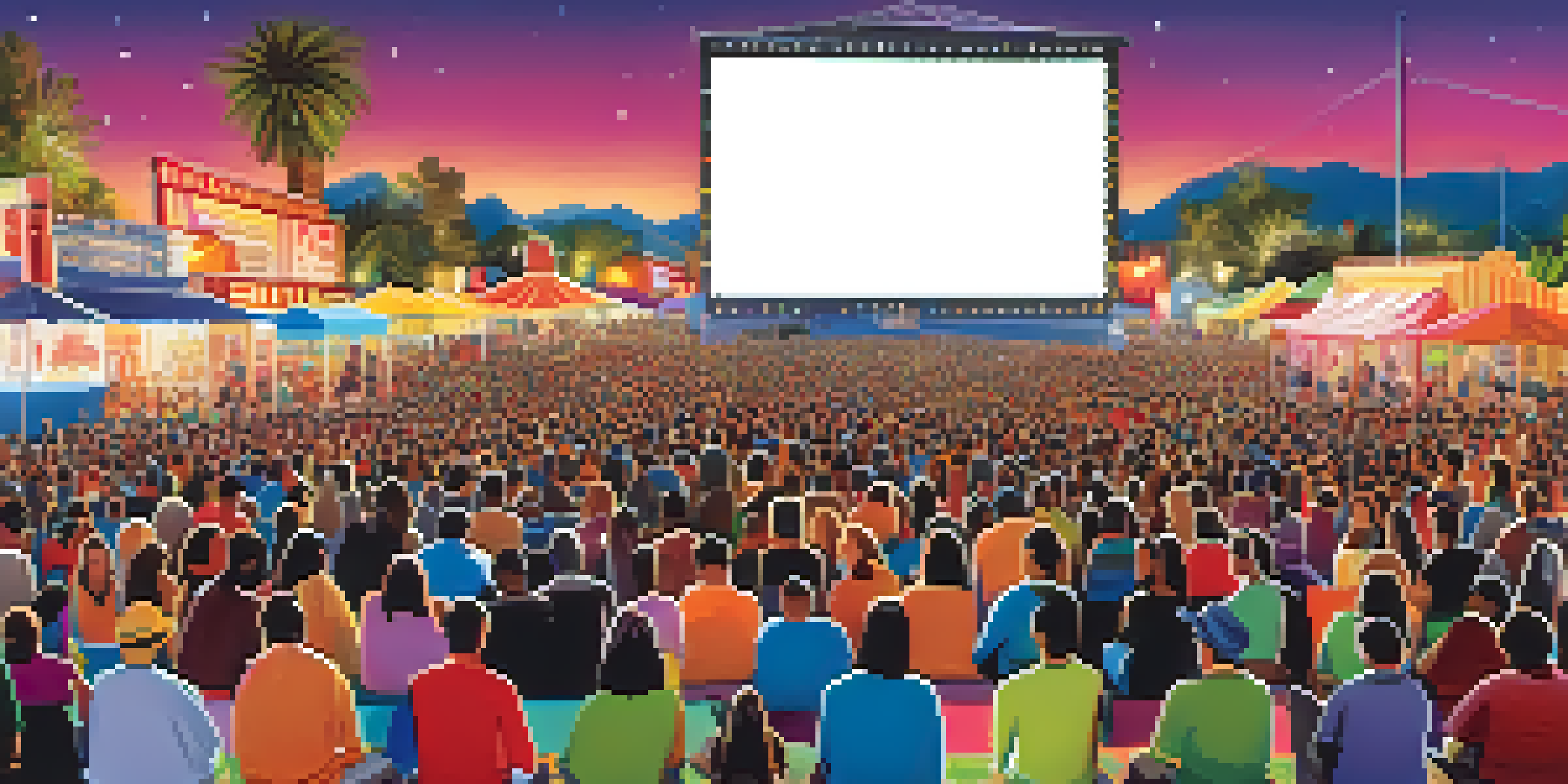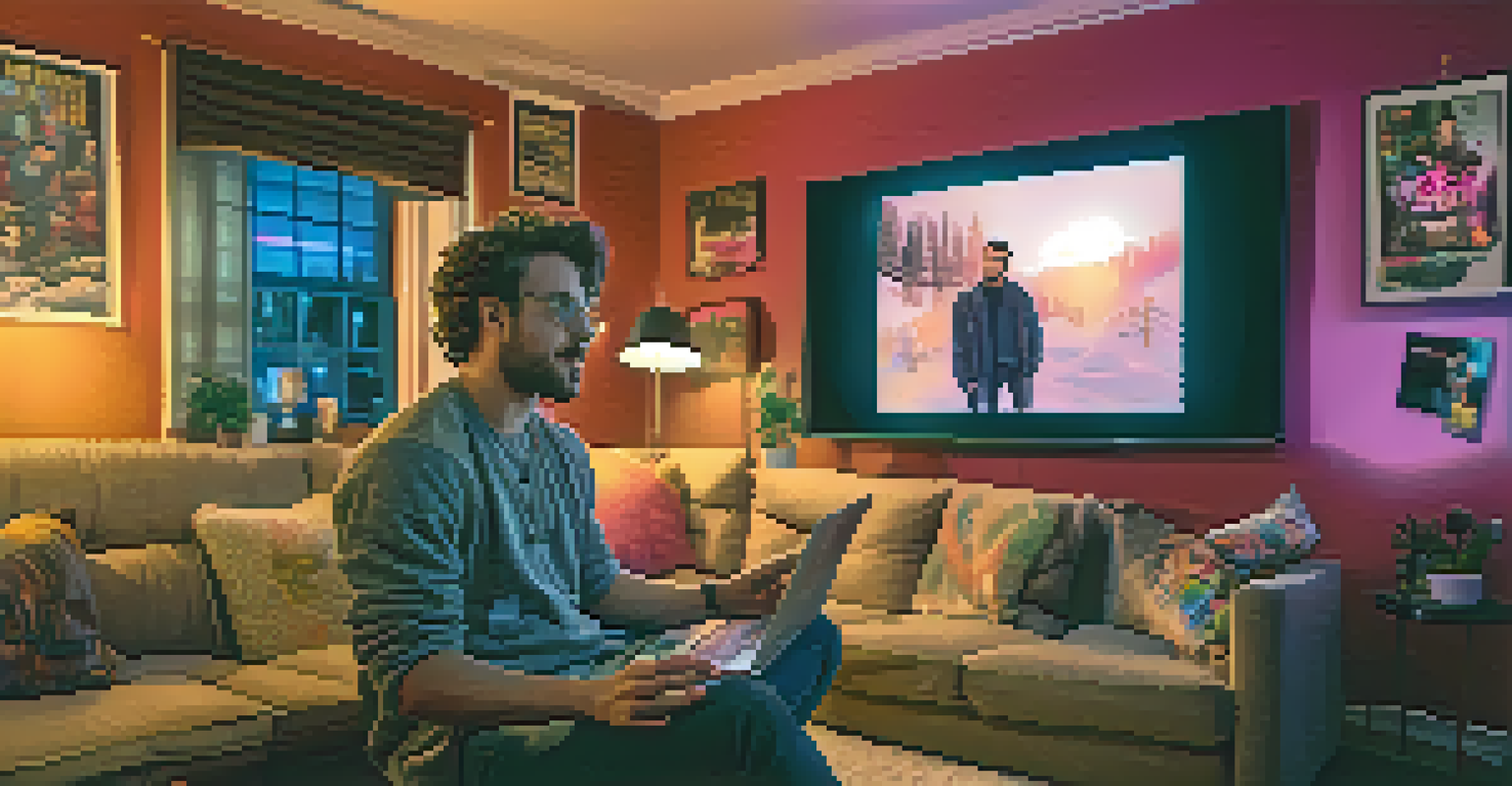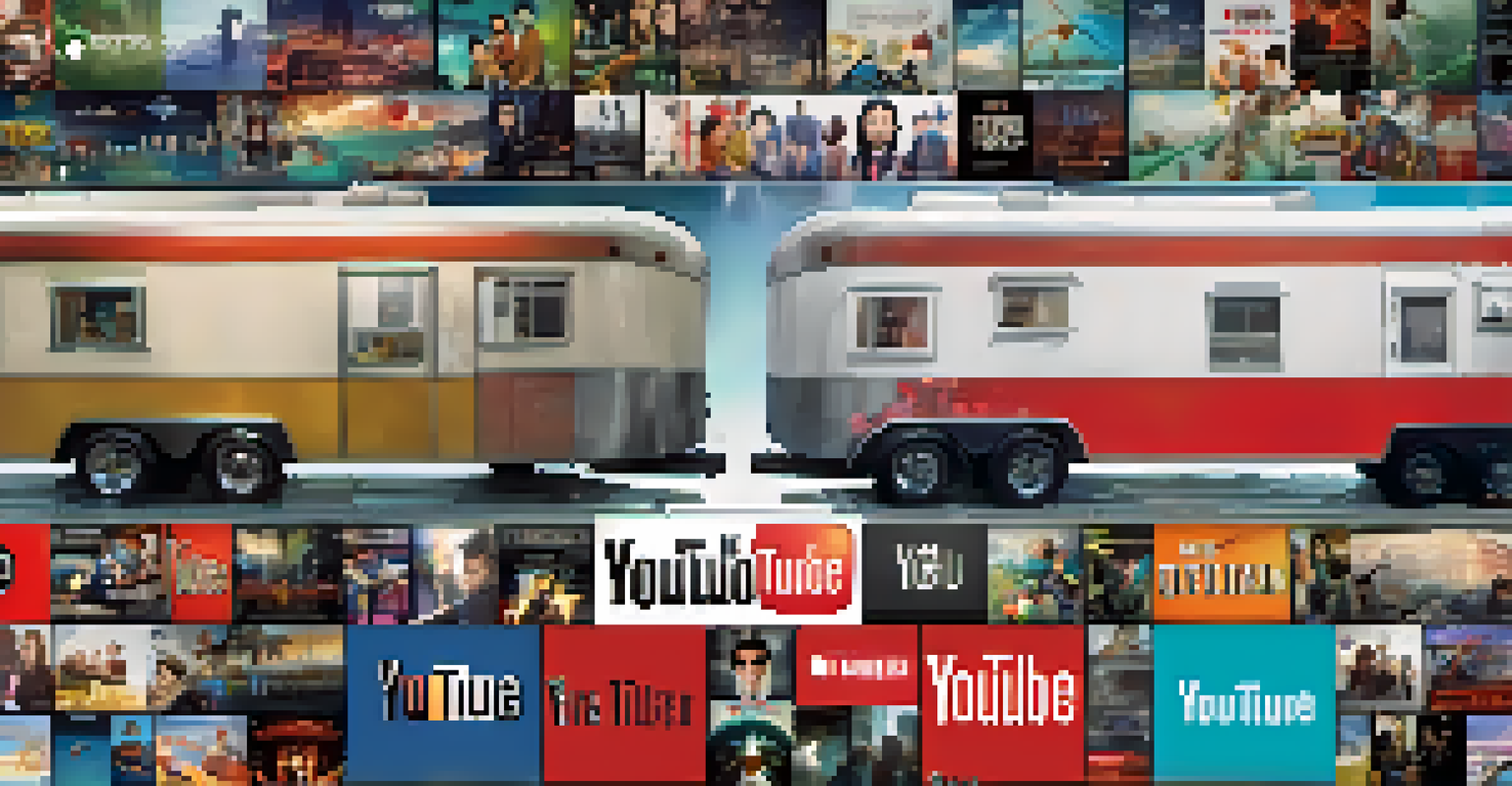YouTube's Impact on Film Trailers and Audience Reactions

The Rise of YouTube as a Trailer Platform
YouTube has become a go-to platform for film studios to release trailers, largely due to its vast audience reach. With millions of users actively searching for content, trailers can quickly gather views and generate buzz. This shift means that studios are now prioritizing YouTube releases, often timing them to coincide with significant events or social media campaigns.
YouTube is the new cinema. It’s where trailers are launched, and it’s where audiences go to engage with their favorite films.
For example, a studio might drop a trailer during a major film festival, knowing that the audience is already engaged with the cinematic community. This strategic timing amplifies the trailer's visibility, allowing it to gain traction through shares and comments. It’s not just about releasing a trailer anymore; it’s about creating a moment that audiences will discuss and share.
As a result, trailers are now crafted with the platform in mind, leading to shorter formats and hooks that grab attention quickly. In this new landscape, the trailer itself becomes a marketing tool, designed not just to inform but to engage and entertain.
Changing Dynamics of Audience Reactions
YouTube has revolutionized how audiences react to film trailers. Viewers can now comment, like, and share their thoughts instantly, creating an interactive experience. This immediate feedback loop allows studios to gauge audience reactions in real-time, shaping marketing strategies based on viewer sentiment.

For instance, a trailer that receives overwhelmingly positive comments may prompt studios to increase marketing efforts, while a negative response could lead to a reassessment of the film's direction. Audience engagement on YouTube provides invaluable insights that studios can use to fine-tune their promotional strategies.
YouTube as a Trailer Powerhouse
YouTube's vast audience reach has made it the primary platform for film studios to release trailers, maximizing visibility and engagement.
Moreover, the ability to see reactions from fellow viewers can alter a person's perception of a trailer. If a viewer sees a flurry of excitement in the comments, they're more likely to feel excited themselves, demonstrating the power of collective engagement in shaping opinions.
The Role of Influencers and Content Creators
Influencers and content creators on YouTube have become pivotal in how trailers are perceived. Many creators react to trailers, providing commentary or critiques that can sway audience opinions. Their established rapport with subscribers makes their reactions influential, often leading to increased views and discussions around the trailer.
The best marketing is when you create a community around your film, and YouTube is the perfect platform for that.
For example, a popular YouTuber might post a reaction video that garners thousands of views, creating a ripple effect of interest in the film. This relationship between influencers and trailers showcases how traditional marketing is evolving in the digital age, where personal connections matter.
Furthermore, collaborations with influencers can also serve as a bridge to niche audiences. When filmmakers partner with creators who have specific followings, they can tap into demographics that may not have been reached through conventional advertising.
Adapting Trailers for Global Audiences
YouTube's global reach has prompted studios to adapt trailers for diverse audiences. Unlike traditional platforms, trailers on YouTube can be easily localized or tailored to different markets. This flexibility allows studios to create multiple versions of a trailer that resonate more closely with regional cultures and preferences.
For instance, a film might have different trailers for the U.S. and Asian markets, emphasizing elements that appeal specifically to those audiences. This targeted approach not only increases engagement but also maximizes the film's potential for success in various regions.
Audience Engagement Transformed
Real-time feedback on trailers through comments and likes allows studios to adapt marketing strategies based on viewer sentiment.
Additionally, YouTube offers real-time analytics that help studios understand viewer demographics and preferences, allowing for more strategic trailer releases. This data-driven approach enhances the effectiveness of marketing campaigns, making them more relevant and impactful.
The Shift to Shorter, Engaging Trailers
The attention span of online viewers is shorter than ever, leading to a trend of creating more concise trailers. On YouTube, studios have started to focus on crafting 30 to 60-second trailers that capture the essence of the film quickly. This shift is a direct response to viewer behavior, where audiences often skim through lengthy content.
This new format not only keeps viewers engaged but also encourages repeat views, as people are more likely to watch a short, punchy trailer multiple times. The goal is to leave audiences wanting more, thereby driving them to seek out additional content related to the film.
Moreover, these bite-sized trailers are often designed for social media sharing, seamlessly integrating into platforms like Instagram and TikTok. This multi-platform strategy ensures that trailers reach audiences wherever they are, reinforcing the film's presence across digital spaces.
Impact of User-Generated Content on Trailers
User-generated content (UGC) has become a significant factor in how trailers are perceived and shared on YouTube. Fans often create their own edits, mashups, or parodies of trailers, which can enhance the film's visibility and create a sense of community among viewers. These creative expressions can sometimes generate more buzz than the original trailer itself.
For example, a fan-made trailer that cleverly combines elements from multiple films can go viral, drawing attention to the original movie. This phenomenon highlights the collaborative nature of content creation on platforms like YouTube, where audiences can become active participants in the marketing process.
Influencers Shape Trailer Buzz
Influencers and content creators significantly impact trailer perceptions, often driving audience interest and discussions through their reactions.
Studios have begun to recognize the value of UGC, often encouraging fans to share their interpretations or reviews. This engagement not only fosters loyalty among the fanbase but also generates organic promotion that feels authentic and relatable.
The Future of Trailers in the YouTube Era
As YouTube continues to evolve, so will the landscape of film trailers. Emerging technologies like virtual reality (VR) and augmented reality (AR) could revolutionize how trailers are experienced, providing immersive previews that engage viewers on a deeper level. Imagine stepping into a trailer and experiencing key scenes firsthand—it's not far-fetched in today’s tech-driven world.
Additionally, as algorithms become more sophisticated, personalized trailers could become the norm. Imagine a scenario where YouTube curates a trailer based on a viewer's previous interactions with similar films, ensuring that each audience member receives a tailored experience.

With the continuous advancement of digital platforms, the future of trailers will likely be one of increased interactivity and personalization, reflecting the changing preferences of audiences. It’s an exciting time for filmmakers and viewers alike, as the possibilities for engagement are virtually limitless.